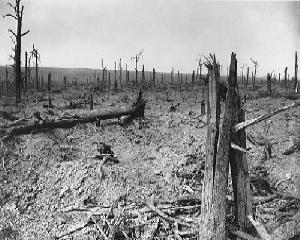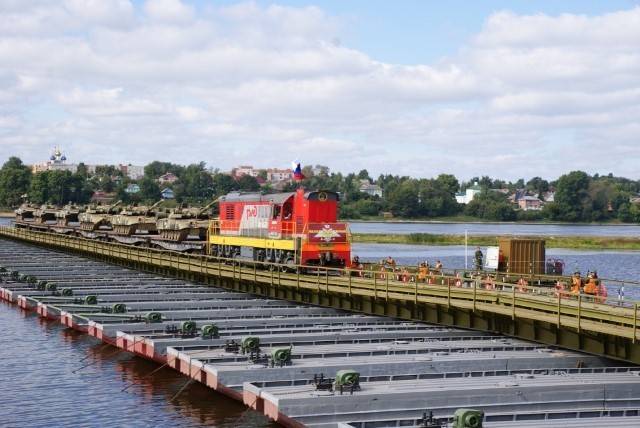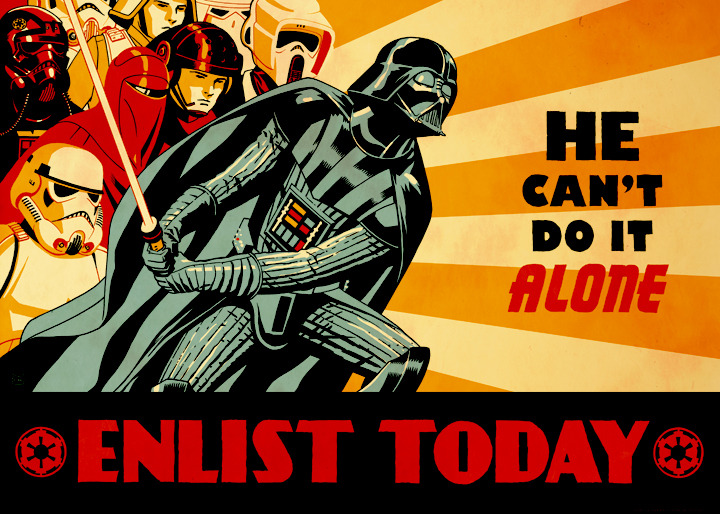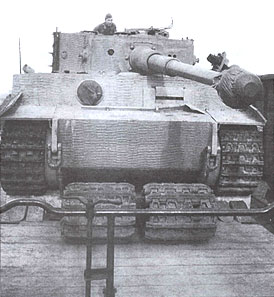
Recently I have been approached by my friends asking me to help them develop a military doctrine for their nations. I have decided, in the spirit of giving people not only fish, but fishing rods, to make a series of brief posts on the topic of military doctrine and applying it for your fictional Nationstates (and possibly SMS, etc.) nation. The following post is the first in this series. It will attempt to answer some key questions for NS players new to military worldbuilding and roleplay.
What Is Military Doctrine?
In the context of NS, ‘military doctrine’ is the in-character worldview of your military. It is developed by your nation’s strategic planners. It is the means by which your nation’s military answers the question: What are our nation’s strategic needs, what resources do we possess, and how can we meet those needs? The answers to this question are determined by the national leadership’s perceptions of the problems facing the nation and of its resources.
For example, in the early American Republic, heated debates took place on the role of the American Navy. Navalists – among them Alexander Hamilton – believed that the United States Navy’s role was to project American force and protect the sea lanes, necessitating a fleet of large, oceangoing ships. Antinavalists, like Jefferson, argued that the primary role of the Navy was to protect America’s own shores, meaning that it would be built using primarily a large quantity of small, short-range ships. Moderates, like Albert Gallatin, argued that the navalist faction was right in the long-term, but that the Republic could not immediately afford a large naval force. As we know historically, the anti-navalist faction held sway early on America’s history, but the Navalists eventually won out, in that their view is today mainstream, and America possesses the largest Navy in the world.
As evidenced by this story, military doctrine in your NS nation is dependent on your nation’s culture – of how your decision makers, and your nation’s people see themselves and their place in the world. The role of military doctrine in NS is to be the centerpiece of your military worldbuilding.
What ways are there to design my nation’s doctrine?
There are two major ways to do it in NS.
One is top-down, and the other is bottom up. In the top-down method, you as a player decide what kind of military you want your nation to have, and then worldbuild the relevant national factors to lead to a relevant doctrine.
Example: You want to do lots of naval warfare RP. You need to come up with reasons your nation has a disproportionately powerful navy. Perhaps it has developed on a major island chain, or perhaps it has a globe-spanning trade empire and has required a navy to protect its sea lanes. Or perhaps it has suffered a national humiliation two generations ago after being defeated in a war by a nation with a larger navy, leading the culture to overcompensate.
The other is bottom-up. You contemplate what your nation is like, and what do its people perceive itself as, and therefore design its military doctrine accordingly.
Example: Your nation has a extensive land border with the nation of Suslikland. While Suslikland has been at peace with your nation for 50 years, your people are still paranoid about the threat of Suslik armor, and therefore military doctrine in your nation lists the Susliks as the Probable Strategic Opponent. Defensive measures are taken to limit the ability of Suslik Armored Divisions to penetrate your borders, and your leadership invests heavily in tanks and anti-tank weaponry.
What kind of factors matter in designing doctrine?
Geography, demographics, economics, culture…. practically every aspect of your nation that is important to your worldbuilding can affect doctrine. Economics is obvious – if your nation is poor, then it might have problems affording advanced weaponry and large armed force. Demographics will determine the structure of your forces – a low-fertility population might have problems, for example, of maintaining a large conscript military. Geography will determine what threats your nation encounters and what tactics it can viably use to address them. For example, if your nation has large open areas – steppes or fields – it is viable to maintain large forces of tanks, or to believe you might be invaded by such forces. Less obviously, a smaller nation might be able to use physically heavier and larger tanks than a large one. (Thus Israel’s use of the enormous Merkava tanks vs. Russia’s use of the T-90, which is 20 tons lighter than the Merkava. Israel will never need to rapidly fly its Merkavas halfway across the globe to respond to an invasion, while it is entirely possible this will happen in Russia).
Why does culture matter?
Culture greatly determines how your nation perceives threats and responds to them. For example: When Japan received jet engines from Germany, it used them not to produce jet fighters (which would have given it a combat edge over American aircraft), but a dedicated kamikaze plane. Another example: Soviet tanks are notoriously more cramped and less comfortable than NATO tanks, because Soviet tank design textbooks value reducing target profile and tank weight over crew comfort.
So to commence designing your nation’s doctrine, you should at least ask yourself the following questions:
1. What is my nation’s Geography? Does your nation have a land border with a hostile neighbor? Does it have vast expanses of jungle, or large deserts? Does it have sea access? A land border with a hostile neighbor requires powerful ground forces. Vast jungles would make it hard for you to maintain and use large mechanized forces, while deserts or steppes are optimal for large tank forces.
In thinking of terrain, it’s useful to remember immediately that major combat cannot be confined to roads. Roads can be made on almost every terrain, but combat vehicles that are confined to roads are exceptionally vulnerable (because the enemy can apply his firepower to the narrow stretch of road, where the vehicles will be easily stopped or destroyed). In general, for vehicles and troops to fight they need to assume combat formations - rather than simply drive one behind the other on the roads, they need to fan out, support each other with fire, and so forth. If the vehicles cannot get off the road, then they cannot meaningfully fight in this terrain.
FOR THE LOVE OF ALL THAT IS HOLY: WHEN DESIGNING NATIONAL TERRAIN DO NOT, REPEAT NOT, TRY TO MAKE IT AS INACCESSIBLE AS POSSIBLE. The inaccessibility/defensibility of terrain is in a direct inverse proportion of how useful it is. As an example, a certain player (name will remain omitted due to the fact he grew wiser since) roleplayed an immense island country. This country rested on a separate island of its own, with its entire shore being lined with 30-meter tall cliffs. The continent was covered in desert, and under the desert there were natural gas deposits that vented onto the surface and caught fire during the night, extinguishing themselves by morning of every (42-degree Celsius) day. And in the center of the continent, behind the burning desert, there were Inaccessible Mountains. In those mountains rested the national capital. The nation was perfectly defensible and inaccessible... but of course, there was the question of how it got settled in the first place. [The original answer was ‘by medieval knights’. Visualize, please, medieval knights scaling a 30-meter cliff, braving thousands of kilometers of desert that literally ignited each night - and then scaling tall mountains... and after all this journey, setting up a city in the mountains. The problems with this fellow’s inaccessible nation are the exact problem with inaccessibility wank in general. Avoid it, please. As a rule, the more impregnable your country is, the more it is filled with tall mountains, dense jungles, and landfills full of hazardous waste, the less desirable it is as a place to live in.

Seen here: A perfectly inaccessible nation. [/img]
Here are some examples of terrain types, and the ways in which they affect national defense:
Plains
Expansive plains allow for large-scale maneuvers with vehicles and enormous combined
arms battles to be fought. For your purposes it does not really matter if the plains are desert, steppe, or whatever - any expansive, relatively flat terrain on which combat vehicles may move qualifies generally as ‘plains’. The largest tank battles in history - the Battle of Kursk and the Yom Kippur War, for instance - were fought in enormous flatlands.
Flatlands are where massive armored, and mechanized infantry, formations will prevail. Because the land is relatively flat, visibility will be generally high - meaning that your soldiers and vehicles, and, conversely, your enemies, will be able to engage each other at relatively high distances. The flatness of the terrain will also allow immense units - regiments, divisions, entire army groups - to act in concert.
Hills
A terrain of rolling hills, such as that seen in Europe around the Fulda Gap, still allows the use of large ground force contingents, but limits the effectiveness of long-range direct-fire weapons such as tank cannon (since you no longer have such far lines of sight). Still in this environment it is important to take control of major hilltops, to attempt to extend the range of your weaponry and line of sight (although obviously the opponent will try to reduce the usefulness of this by hiding behind other hills, etc.).
Jungle/Forest/Swamps
The three aforementioned types of terrain often appear together in various combinations, and they have in common the fact they limit the usefulness of large formations of combined arms forces. It is difficult for large groups of vehicle to move through swamps, jungles, and forest (the trees get in the way, and one can easily sink one’s vehicle in the swamp), while low visibility bars them from using the advantages of their heavy weapons.
In such a terrain the use of helicopters (to ‘bounce’ men and resources from one clearing to another), as well as light infantry (more capable of maneuvering and fighting in the jungle) becomes more prevalent. In a crude manner, imagine a mechanized infantry company - about a hundred men and two or three dozen APCs or IFVs - arriving at the edge of a dense forest. Even if they manage to get inside the treeline - without, say, the APCs getting stuck - they will not be able to see each other past the tree cover, and will not have the ability to shoot people at the full range of their APCs main guns’. This means that a lot of the advantage these heavy vehicles would have given your men will be lost to you.

Helicopters in the jungle of Vietnam
Mountains: Mountains have a lot of the same problems jungles and swamps have - they are hard to access by ground vehicles, and the few roads that run through them are easily blocked off by ambushes. However, the engagement distances at which your soldiers fight are now longer (in Afghanistan, soldiers find themselves fighting at distances of up to 800 meters!), as the other side’s soldiers might shoot at them from an opposing mountain slope. Another difficulty is that helicopters are less useful at high altitudes - their payloads decrease, and eventually the rotors give out altogether as the air gets thinner. Finding a landing spot in the mountains is difficult as well. Specialized mountain units utilize lighter vehicles (and even horses and mules) for transport, and often provide their men with mountaineer training.
Arctic Region: Another special area. Many common combat vehicles cannot operate on the snow on ice due to excessive ground pressure. Fighting in the Arctic requires special gear and training (the Russian military mandates cross-country ski training for all mechanized infantry, and additional ski training for Arctic infantry). Even if your country has trans-polar areas it does not necessarily need Arctic Infantry - Russia, a country dominated by it Transpolar regions, has felt it did not need Arctic brigades until very recently, when Russian doctrine began anticipating confrontations with other countries over the natural resources of the Arctic.
Because arctic warfare vehicles are lighter - and thus less armed and armored - than ordinary AFVs, Arctic divisions would probably not stand up well to fighting to ordinary, non-arctic units.
Coasts: The structure of your nation’s coasts is vital for your national defense. Major industrial harbors are needed to maintain your navy - remember those supercarriers you bought at that awesome storefront over at GE&T? Where do your carriers park, huh? You need major ports to maintain and rearm any major naval ship. Typically major naval bases are located at or near major civilian ports.
Conversely, some parts of your coast are open to attack by the enemy. Broadly all forms of coastline can be divided into two forms - those open to an amphibious landing (for example beaches) and those not so open (cliffy terrain technically is not). Note that what we’re talking about an unprepared, opposed amphibious landing - an amphibious landing where the enemy’s troops are shot at, and he did not have time to prepare the landing. In this case, the only areas that are open to amphibious landing are those where the opponent’s amphibious vehicles can drive out of the water and directly onto the shore, under fire (you are, obviously, defending your coast). If the enemy manages to land troops on the shore (say, by airlift or parachute landing), and establish a beach-head, it is conceivably for those troops to blow up a cliff-face to make it possible for further vehicles to drive up the resulting slope, or , if the beach-head is retained for months or more, even build a small improvised port.
There are several strategies to defend a coast from landing. Other than maintaining a strong enough navy to defend against enemy forces in the first place, your ground forces should maintain a force of patrol aircraft and long-range RADAR installations (to defend against enemy ships), as well as mobile launcher batteries for anti-ship missiles (on trucks and on aircraft).

Mobile coastal defense launchers
If this fails, and the opponent’s forces are already approaching your shore, it is useful to deploy anti-landing mines directly in front of them. These are special mines that are deployed into shallow waters and will mess up things like light landing craft, amphibious vehicles, and boats. Your ground forces meanwhile set up a defensive line on shore in the same way they normally do.
Remember: the landing is when the enemy’s tanks, APCs, soldiers and ships are most vulnerable. Landing ships (and even aircraft carriers) are vulnerable to artillery and ATGMs, and amphibious vehicles cannot fire their guns as accurately from the water. Infantry are bunched up tight in landing vehicles and APCs, and are unable to use their guns against you.
Cities: The hardest terrain to fight in. Combat manuals generally state officers are to avoid trying to capture the opponent’s cities, because of the simple fact that fighting in cities tend to be ferocious and take up a great amount of time. However, cities that are transport hubs, industrial or political centers, are likely to get attacked in wartime
What makes cities so hard to fight in? Primarily it is the fact that you can’t really see through walls. Houses - even houses that have been wrecked by shell fire and are not fully inhabitable - are going to provide at least concealment, and probably even cover, for enemy troops, while obscuring communications between military units. In other words, if a platoon goes down one street, and another platoon goes down the other, they cannot really assist each other, and an enemy attack is likely to come by surprise - and given that the reverse goes for the enemy, any battle is actually a series of ferocious firefights between various small units.

This is not an atypical result.






 [/align]
[/align]








